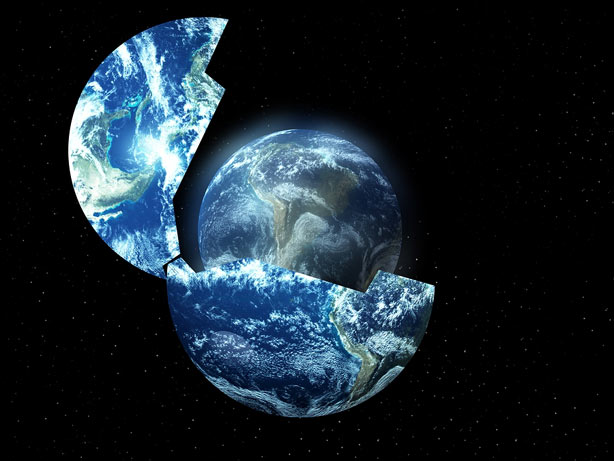
What happens when a world of either/or becomes a world of neither/nor?
In the 1920s, comedian Robert Benchley commented that there are two categories of people in the world: people who divide people into categories and people who don’t. He went on to remark that, “Both classes are extremely unpleasant to meet socially, leaving practically no one in the world whom one cares very much to know.”
Groucho Marx may have been thinking the same thing when he famously quipped that he wouldn’t want to belong to any club that would have him as a member.
In all seriousness, it may be high time that we took these humorists and their absurdist observations a bit more seriously.
My first serious exposure to absurdism was back in my sophomore year at the University of California, when my English professor introduced our class to playwright Edward Albee. I was immediately fascinated by The Zoo Story, although I wasn’t quite worldly enough to appreciate the subtext of class warfare and social malaise.
Time would solve that problem. But I was still able to recognize the hidden threads of realism sewn together in a garment of tragicomic incongruity.
OUR BINARY WORLD
The short drama opens with Peter, a middle-aged executive, sitting on a park bench reading a book. He is accosted by Jerry, a down-on-his-luck drifter who badgers Peter into a conversation, then insists on describing his recent trip to the zoo, which quickly turns into a pitiful confessional of Jerry’s own life.
Finally, Jerry picks a fight with Peter and threatens him with a knife. He bullies Peter into taking the knife to defend himself, then charges at Peter and commits suicide by impaling himself on the blade.
The comfortable, predictable, uninspired world of Peter collides with the cold, erratic, unaccommodating world of Jerry, with inevitably fatal results. The two of them can’t survive on the same planet. They certainly can’t share the same park bench. In the end, both their worlds are destroyed
AND THROUGH A GLASS, DARKLY
Edward Albee’s most famous title took me even longer to appreciate. Who’s Afraid of Virginia Woolf? introduces us to George and Martha, whose charming banter rapidly deteriorates into the most terrifying kind of dysfunction. After inviting a young couple, Nick and Honey, into their home, they begin a macabre game of emotional cat-and-mouse with their hapless guests and with each other.
It’s no accident that the main characters are named for the first president of the United States and the first first lady, or that Nick is an open allusion to Nikita Khrushchev, Secretary of the Soviet Union in 1962, the year the play was published. By then, the global landscape had been reduced to a standoff between us and them, as East and West faced off against each other with arsenals of nuclear weapons sufficient to blow up the world a hundred times over. There was no neutrality, no room for negotiation, no place to hide from the global devastation that seemed imminent for the next two decades.
George and Martha’s marriage was much the same.
END OF AN ICON
Edward Albee died last week at the age of 88. He leaves behind a world as absurdly chaotic as one of his own plays, a world in which alliances shift and twist as quickly and unpredictably as the prickly exchanges of his surreal characters.
Like the war between George and Martha, who are incapable of expressing their love except by inflicting pain upon one another, modern society resides divided into opposing camps embittered and embattled over values and morals, over accountability and entitlement, over our very identity as citizens of the planet. We all claim world peace, social justice, personal freedom, and the general welfare as our ideals and aspirations; but we allow our allies free rein in the tactics they employ against our ideological opponents, whom we excoriate when they behave exactly the same way.
With every election cycle, we push the boundaries a little further, inflicting ever deeper wounds upon ourselves and our country, all in the name of preserving or restoring the ideals that once defined a new nation conceived in liberty. And each time the scars last longer, reminders to justify the next round of volleys from both sides, each convinced that the other is unworthy of either trust or compromise.
And so, we end up like the closing scenes of Edward Albee’s plays, impaling ourselves on one another's blades or nursing our wounds with empty promises that the future will be different.
George: It will be better.
Martha: I don't know.
George: It will be. Maybe.
But it won’t be, at least not for George and Martha. They’ve forgotten how to communicate with words of explanation and understanding; all they have left are toxic jabs and barbs.
Is that really what we want for ourselves and our children? Or do we have the courage to demand as much from ourselves as we do from those with whom we disagree?
Rabbi Yonason Goldson is a professional speaker and trainer. Drawing upon his experiences as a hitchhiker, circumnavigator, newspaper columnist, high school teacher, and talmudic scholar, he teaches practical strategies for enhancing communication, ethical conduct, and personal achievement. He is the author of Proverbial Beauty: Secrets for Success and Happiness from the Wisdom of the Ages is available on Amazon.
Comment by clicking here.


 Contact The Editor
Contact The Editor
 Articles By This Author
Articles By This Author
